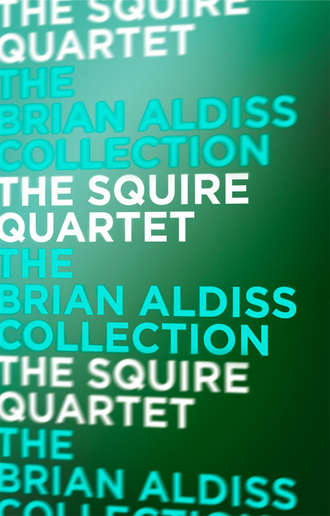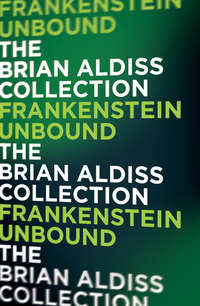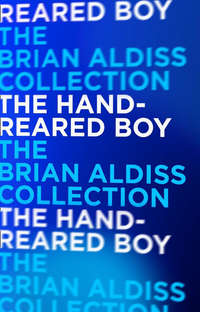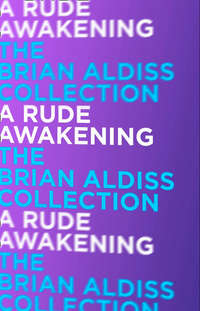
Полная версия
The Squire Quartet
The Russians were escorted into the conference hall by one of the vulpine young academics from the University of Ermalpa who played some part in the organization of the conference. Squire observed that Kchevov spoke fluent Italian to this dignitary; Rugorsky maintained a watchful silence, blinking as he gazed about the room. He hardly looked up as the Ermalpan delegate bowed himself away.
When Jacques d’Exiteuil entered through the double doors, his copper hair gleaming, the chatter in the large room was slightly hushed. His arrival was a signal that business was about to begin. Slight but important, he smiled at all and sundry as he advanced, slipping easily from one language to another according to the nationality of the delegate he addressed. Even to the Greek …? Well, it sounded remarkably like it.
Using the biography list, Squire started to make a nationality count. Three quarters of the delegates were Italian, over half of them from the University of Ermalpa, which gave the proceedings the provincial air of which Morabito had spoken. There were ten French, five Americans, including the youthful Albert Russell Cantania, who had already made a name for himself in academic circles with his large structural work, Form Behind Formula. Had he been invited because he was likely to make a real contribution or because he had an Italian surname? Then a rabble of nationalities, including Squire himself, the only Englishman present. He was sorry to see there was no Yugoslav delegate.
The Americans, two Canadians, and two Australians, who were very young and studying in Ermalpa (and apparently invited along for the ride), all dressed in sloppy style, without ties or jackets; one Canadian wore an old T-shirt with an advertisement for something across his chest. They all seemed to be heavy smokers, lighting up as soon as they slumped into their chairs.
‘Are we going to be too hot in here, Tom?’ d’Exiteuil asked as he passed Squire and took his seat.
‘Temperature’s fine as far as I’m concerned.’
‘No windows, you notice. Poor psychological effect. Well, we will proceed. We can always scream for ice, I suppose.’
He dropped his head, looking at his watch; his hand rested on his knee. He studied it so hard that Squire looked at his own watch. Nine four on the morning of Wednesday, 13 September. It was the same time in Britain. And where was Teresa and what would she be doing? The possibilities which swam to mind in response to that question made him sigh. He took a deep breath and held it, diverting his attention. D’Exiteuil would not be studying the time but gathering his thoughts for his opening speech.
Something like calm settled round the table.
Frenza whispered to d’Exiteuil and then began speaking into his microphone without standing up. He sounded amiable and relaxed.
Putting on his headphones, Squire twiddled with the translation box. Instructions said Dial 3 for English. He switched to 3, but nothing happened. He noted that the other English-speakers were having trouble.
Then a girl’s voice entered his ear, saying in a foreign accent, ‘Sorry, he is saying some general words of welcome to delegates, from a number of important people – like the mayor of Ermalpa, I think he said, or maybe – yes, the mayor couldn’t be present. The Faculty of Icon – Iconographology Stimulation – well, yes, all from the great University here. The first ever of such international affairs on such a subject and of such an importance. To be in keeping with the modern age and find a way of accessing all the productions of all the mediums generally regarded as of little weight, which is in fact where culture, it begins. So first he’ll let Mr Sagrado from the Azienda Autonoma di Turismo di Ermalpa e Nontreale give his address to us.’
Squire glanced covertly at d’Exiteuil, but the chairman was staring ahead, following everything without headphones.
The man from the tourist office rose to his feet and spoke at some length. He praised the conference, its delegates, its objectives. He welcomed everyone to Ermalpa, and hoped that, despite the brevity of their stay, they would be able to forget work for a short while and see something of the beautiful coastline and the city and provinces which were, he could assure them, stuffed with antiquities, not only from Roman times but Norman, Arab, and Gothic periods. On the Sunday, at the close of the conference, there would be an excursion for delegates, in special luxury coaches provided by the Board of Tourism. He also expected that they would have a marvellous discussion in this room where Garibaldi was known to have been, and was only dismayed that he was unable to stay to hear their words of wisdom. He thanked them for listening and sent the mayor’s regrets.
Delegates clapped. They murmured among themselves.
The two Russians sitting on Squire’s left had remained looking straight ahead, arms folded, not even exchanging a word with each other. The Englishman was conscious of the bulk of Rugorsky in the next chair, and so prepared when the Russian turned to him and remarked, in French, ‘The speaker did not mention the cathedral at Nontreale, which is only some kilometres from here. Yet it is famous even in my country for its mosaics.’
‘I’ve heard the mosaics are very fine. I’ve not been there.’
‘Perhaps it will prove possible to go there. Perhaps one can get a coach.’
The impact of his gaze was considerable. For a moment, Squire received the impression that he recognized Rugorsky. The man’s eyes were hazel, with a golden gleam at their centre; they were fortified behind marked folds beneath the eye and cheeks positioned high on the face. Looking at Rugorsky, Squire remembered the old Russian saying, ‘Scratch a Russian and you will find a Tartar.’
‘Possibly we may talk together later.’
‘I’d be glad to. I enjoyed your book on Shakespeare.’
D’Exiteuil rose, clutching his beard.
He began to speak in English, then switched to his native language, then, with a small joke, to Italian. He spoke for about half-an-hour, about the nature of the conference and about what they should strive to achieve during the conference. He reminded delegates that they would not be allowed to talk for more than thirty minutes, because of pressure of time, but full or extended versions of their papers would be published later in the proceedings. There was tremendous interest all over the world in what had been termed ‘arts of no refinement’, the instant clichés and iconophilism in various media given off like radioactive particles by the bourgeois societies of the West. Whole genres were being born which invited categorization and scholarly attention, since these reservoirs of the dystopian imaginary were where we could go to learn most about the social dimensions of contemporary mondial life.
Changing tack slightly, and putting a small restless right hand into his trouser pocket, he went on to praise the University of Ermalpa for having established the Faculty of Iconographic Simulation, and for its foresight in setting Dottore Gianni Frenza at its head. Even better, the University had agreed – not without a couple of years of prompting from the present speaker in his watchdog role as editor of Intergraphic Studies – to host this present vitally needed conference. They had secured monies from the International Universities Foundation, for which they were most grateful. And the Ermalpa Tourist Board had been extremely helpful also. The Faculty felt that it was following parameters set down almost a decade ago by that doyen of popular culture, Thomas C. Squire, whose series of TV programmes, ‘Frankenstein Among the Arts’, had done much to further interest in a vital study area. They esteemed themselves very fortunate to have Tom Squire with them as guest of honour.
Squire appeared pleased at this, nodded to both sides of the table, and restrained himself from reaching for the water glass.
The small hand returned from its trip to the pocket and took a slow circuit through the air in a clockwise direction as d’Exiteuil explained that they hoped this First International Congress of Intergraphic Criticism would first of all promote deeper interest in polyvalent media throughout Italy, and then throughout the rest of the world, including the socialist countries.
He knew that the socialist countries had already begun to express interest, and even to study the subject academically.
As he said this, he turned slightly, to smile beyond Squire at the slightly bowed white head of Vasili Rugorsky.
‘I feel bound at this point to inject the personal note,’ the interpreter of d’Exiteuil continued. ‘I have been personally involved on this issue, and I know that all my colleagues are in general compliance that we have reached significance here only because we have taking part members of one of the foremost nations or I should say states on the planet today. It’s the home of most powerful coinages, achieved nowhere else, followed everywhere. Let’s just say without emotion how we welcome very much the two colleagues from the USSR, Vasili Rugorsky and Georgi Kchevov.’
D’Exiteuil started to clap his hands, and most of the Italian members joined in. So did the Americans. Other delegates followed suit. Squire, sitting next to Rugorsky, joined in. The applause mounted. The two Russians rose from their chairs, and stood there smiling amiably. Everyone was clapping now, smiling and nodding in agreement to each other.
‘Merci mille fois,’ said Rugorsky. There was general laughter as if a witticism had been delivered. The clapping died. The two Russians sat down. D’Exiteuil raised his left hand, palm inward, letting it drop to a horizontal position as he inclined his head with a similar movement, and then sat down himself. It was not entirely a modest gesture, not when linked with a sly little smile which chased itself into his beard. It appeared to say, ‘Well, there you are, I gave them to you. It’s what you all wanted.’
After a pause, Frenza spoke into his microphone, and the English voice in the earphones said, ‘Now our first formal speaker of our first formal session, our guest of honour, Mr Thomas Squire, will address us. Afterwards, just fifteen minutes, please. Thanks, Mr Squire, if you would …’
Squire removed his earphones, placing them on the table before him as the clapping died. He regarded the faces round the table. Sharp, intelligent, youthful, for the most part. An audience he, like d’Exiteuil, had worked for.
‘Mr Chairman, Ladies and Gentlemen, I must address you in my native tongue, and trust that the interpreters will carry my meaning to you. Will the interpreters please stop me if I go too fast?’ His mouth was slightly dry, his heart beating strongly. He was used to the effect; it gave him power and his voice resonance as he breathed deeply. In any case, it would pass as it always did when he got into his stride.
‘It’s not for me but for our hosts to say “Welcome to Ermalpa”; what I can say is welcome to a select band, the band of people who attack that great open conspiracy, critical contempt of popular culture. That band comprises not only critics but readers, viewers, and general doers. Everyone benefits from popular culture, and a reasoned critical view should be to wish to survey it, not condemn it. The pop art of one generation becomes the classic of the next; Homer was, in his day, the Bronze Age equivalent of the TV soap opera.
‘I will remind you of the simple and seminal idea of my founding of SPA, the Society for Popular Aesthetics, which has led to our present encouraging situation here, with the Faculty enjoying IUF support. As a child in the thirties and forties of this century, I was addicted to the cinema, the great popular art form of the period. I went as often as I could in the small town in which I lived. I kept lists of the films I saw, of the actors in them – not only the stars but the minor players – and of the directors and companies who made them. I could tell by the sets and the lighting whether I was watching a film made by MGM or Warner Brothers or Gainsborough.
‘All this activity was opposed by my parents. They regarded the cinema simply as a repository for trash, as too many people today regard television. In particular, they disliked the way in which I settled on two actors as my heroes. Those actors were Errol Flynn and Humphrey Bogart. Flynn was at first my particular favourite, then I shifted to Bogart. The bitter and wise-cracking character Bogart played, on whichever side of the law, spoke to me of something enduring in human nature, and personified the man who lives his life battling in obscurity, often against forces of which the rest of the world has no knowledge.
‘Although I was quite inarticulate about it, I revered Bogart. For himself and for what he symbolized. My parents came to hate him. To them, Bogart was just a gangster and, if I followed him, I should go the same way. It may sound ridiculous, but so it was; nor is that kind of unthinking opposition to living symbols defunct today. There will always be a vocal minority against whatever is vital in our culture; it prefers what is safely dead.
‘The Hollywood system as it was in its hey-day has passed away. In the hour of its downfall, critics suddenly found good things to say about it, where before they had done nothing more than sneer. As soon as Bogart had died, they did the same for him. They pretended they had always praised him. He became – as Elvis Presley did a few years ago – a great cult hero. He was dead, and safe. You recognize one of the themes of Frankenstein Among the Arts: praise only for the dead; exile, cultural exile, for the living.
‘What we hope to bring about here, and hereafter, is a much wider appreciation of what it is in popular culture which had genuine vitality, and how its roots are always based firmly in the fertile soil of the past, even when that is by no means easily apparent.
‘Which brings me to my paper. You will see from your programme that it is entitled “Since the Enlightenment”. Because of the time limit sensibly imposed on speakers, I can give only a résumé now. The full paper will be published in our proceedings, and also in the next issue of our friend Jacques’s Intergraphic Studies. Am I going slowly enough for you, interpreters?’
He caught a flash of smile in one of the boxes, and continued.
‘The subject we study is admittedly amorphous. It must often seem even to us that we are all studying different, even conflicting, subjects. I believe that not to be the case, and expect that conferences such as this one will bind more closely together not only our interests but us ourselves. To that end, I hope you will consider a proposal that we should adopt a common term for our diverse subject matter. My suggestion is, “Future Culture”. FC for short. Or perhaps you prefer “Symbols Future”. SF.
‘Under some such heading, we can consider the arts which interest us, the arts of today, the arts scorned by higher criticism in whatever field. You see them listed in your programmes: pinball machines, movies, prophecy, TV, pop art, rock’n’roll, the Top Twenty, science fiction, design, and the rest. Everything from make-up to metropolises. I have nothing against higher criticism, but its analytical tools are honed towards the objectives of its dissection. It has shown itself unable to discuss effectively our Future Culture.
‘Because Future Culture is something, according to my definition, which has sprung up since the beginning of the last century. It is either affected by, or the product of, mass-production. The machine has transformed it. A paperback novel, for instance, can be purely a product of the mass-market, designed as a unit package with its cover to sell this month at check-out point in a million supermarkets and never be seen again; or it can be a newly edited edition of Henry James’s The Ambassadors. What are the differences and similarities between a James novel and the latest catastrophe novel? It’s rich ground for investigation.
‘Some of our subjects do not claim to be art or even folk art. Car bumper-stickers. I know a man in Toronto studying them now. Are they ripe for something more than sociological study? Some subjects are simply commercial ways of doing traditional things. But are T-shirts a modern equivalent of sandwich-boards or a way of legitimizing graffiti? We have to improvise questions and answers as we go along. Virtually all arts have been touched by the change-compelling system of mass-production and mass-consumption.
‘We believe that precisely in this amorphous situation lies a hope for future acculturalization. Improvisation and spontaneity are still possible, contrary to what is sometimes argued. Older arts tend always towards formalization or even fossilization, and never more so than now, as we move towards the eighties, when global change is swift. The fluidity of non-art may become one of the staples of the future. It’s up to us to forge a methodology to help direct it constructively.
‘I see from the noticeboard in the foyer that some ingenious person on the Faculty of Iconographic Simulation has videotaped my television series, “Frankenstein Among the Arts”, and will be showing it in the adjoining small hall for the next three nights. You’ll excuse me if I stay in the bar while it’s showing – I lived with the series for so long, I almost know it by heart. Of course, it does relate closely to the subject of our discussions. But I must remind you, for all the kindness you have done me, that I am an amateur in a field where you are experts, and I took as my text for the series a tag from the philosopher Gurdjieff, which I discovered long ago in Ouspensky’s fascinating book, In Search of the Miraculous.
‘It’s a tag which many authors could use at the front of their books as a warning. Gurdjieff says, speaking of his work, “The object I had in view was to produce an interesting and beautiful spectacle. Of course there is a certain meaning hidden beneath the outward form, but I have not pursued the aim of exposing and emphasizing this meaning.”
‘Nor have I, because I am unable to. I only know that the traditions of the West, strong and honourable though they are, are insufficient to live by. We have to embrace the new and rise up to change.’
2
Flattery and Higher Foolishness
Ermalpa, September 1978
On checking into the Grand Hotel Marittimo, conference delegates had received small books with meal vouchers in them. One voucher had to be presented at every meal, the meal being understood to include a bottle of red wine and half a bottle of mineral water.
Squire entered the dining room of the Grand Hotel a little late for lunch, and found himself with no choice of table. He had been detained by one of the American delegates, Selina Ajdini.
Following the coffee break, four speakers had delivered papers on various aspects of popular culture: Enrico Pelli on ‘Psychiatry and the Popular Understanding of Prehistory’, Marianne de Suffren on ‘Horror Films in Catholic Countries’, Geo Camaion, the Romanian delegate, on ‘Symbolic Cognition’, and finally Selina Ajdini on ‘Aldous Huxley as Failed Prophet’.
Since only the last paper had been received in English, rather than in the language peculiar to the interpreters, and since Squire had once met the subject of the paper, and admired his writings, he had paid particular attention to Selina Ajdini.
There was another reason to attend. There were few women at the conference, and only three actually delivering papers. Of those, the most immediately striking was Selina Ajdini.
She carried herself with a defiant air, as if aware of the covertly predatory glances of the young Italians. A heavy brown leather travel bag over one shoulder gave her the air of a soldier – perhaps a soldier in a comic opera. So Squire reflected, seeing her move with the encumbered shoulder thrust forward, one red-nailed hand about the bulk of the bag. She wore a fine blue corduroy suit with a white shirt beneath. Where the blouson jacket gripped her waist, she wore a large-linked gold chain, the end of which jangled as she walked. High leather boots tight to the calf completed the comic opera soldier effect.
Ajdini’s face suggested something different. Although she was slenderly built, this slenderness was masked by her clothing; the quality emerged nakedly in her face. It had a bare keenness like a hare’s breastbone found on a windy headland, eroded of flesh, robbed of formed associations. The simile occurred to Squire as the woman rose to speak; there was something remote and inhuman, he thought, about that proudly sculpted profile, which the scrupulously coiffed black hair did little to counteract. The remoteness made her age difficult to estimate.
She put spectacles on her nose to read her paper. The paper proved to be littered with references from a dozen languages. Her thesis, as far as it could be distinguished, was that Aldous Huxley’s life typified the end of one great strand of English and European bourgeois Romantic thought. The Huxley family typified the nineteenth-and twentieth-century culturally privileged elite, with its Darwinian connections. And that elite typified a repressive class structuralism cloaked by a veneer of scientific and humanistic enlightenment.
It was Ajdini’s contention that Huxley’s ‘life parabola’ from Eton and Balliol to the scoured coast of California represented at once a despairing attempt to escape the autocratic vengeance of late capitalist society and a further plunge into a deeply destructive hedonism masked as asceticism (but betrayed by use of drugs).
Although she spoke brightly, Ajdini’s summing up was equally dusty in content. Huxley’s life represented to pop culture, one of whose idols he had been, a Janus-faced bourgeois prophet with nothing to pronounce upon but the collapse of his kind. While assuming to speak ostensibly for preservation of values such as ecology, Huxley found himself forced to act out prophetically the effete culture of the West. That culture was running into suicidal acts and self-destructive deserts. Prophecy could no longer function under capitalism; there was no science of the future since that future was about to terminate. The picture of laissez-faire sexuality and technology in Brave New World was an inadvertent portrait of a way of life already doomed.
It was not even a clever paper, decided Squire, pencilling the words ‘Higher Foolishness’ on his programme; yet it was tricked out with cleverness. Ajdini’s reference to Romanticism came adorned with learned references to European Romanticism, wherein was pointed out (in parentheses) that, although English and German Romanticisms were well propagandized, in reality the great Manzoni of Italy, and of course the Russians with Pushkin and Lermontov, not to mention other East European figures working in Slav, Hungarian, Romanian, Georgian, and other languages extending as far as the Caucasus and further, where the authenticity of folk poetry and (for example) the romantic letter had become truly popular, much more tellingly represented the Romantic tradition at grass-roots level.
When Ajdini sat down, a French delegate asked a lengthy but footling question, to do with the relationship between Huxley’s Brave New World and the ‘plays of protest’ of Shakespeare – or, as he believed, Lord Bacon – particularly The Tempest, as interpreted through the monopolistic tendencies of late-nineteenth-century scientism. Ajdini answered quite briskly, smiling and making an unscripted joke, in which it was apparent that she had been misled by the interpreter and missed the drift of the question. Frenza then intervened, thanked the main speakers for their contributions, and adjourned the meeting until sixteen hundred hours.
As delegates poured from the hall, Selina Ajdini was waiting among the ferns of the marble gallery. She advanced towards Squire, travel bag thrust forward, smiling and holding out her hand. Her big blue-rimmed spectacles still on her nose made her eyes – of a much more elusive shade of blue – look large and defenceless.
‘Mr Squire, we have not met and it is my great pleasure that we do so now; I attended your Pop Expo in London a decade ago, and marvelled like everyone else. It is wonderful that you came to Ermalpa. My name is Selina Ajdini and I am Associate Professor in Comparative Stylistics at the University of the Gulf in Galveston, Texas. This year I have a sabbatical in Europe East and West, with a roving commission for the Frankfurt-am-Main magazine Die Spitze.’








